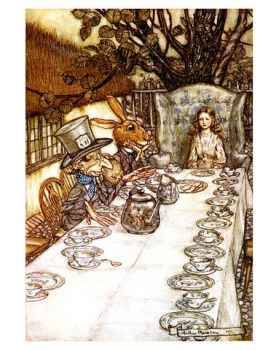This is the second in Madeleine L'Engle's quintet (quilogy?) concerning the Murry Family.
Charles Wallace has started First Grade and life is not going well. When the other children are in the class, they announce they have chickens or that our bodies are made up of skin and bones and "stuff." Charles Wallace announces he is currently fascinated by mitochondria and farandolae. He then starts to explain that these are prokaryotes that were incorporated into our cells.
His teacher tells him to stop making stuff up and moves on the next child.
Because he is different, Charles Wallace is beaten up every day at school or on the way home. The principal's response is that Charles Wallace must learn to "adapt."
I had to check the copyright date at this point. Could it be possible that a teacher and a principal would not know about mitochondria? Would a principal really allow a child to be beaten up regularly on the way home from school and tell the parents (and Meg, Charles Wallace's older sister) that the child must learn to adapt?
Well, the copyright is 1973, which means Ms. L'Engle was probably writing the book in 1971-72. Mitochondria (and other cell organelles) certainly were in my high school biology textbook at that time. And I knew about prokaryote and eukaryotes. But I was actually interested in that kind of stuff. So I'm not the best example of what was commonly known!
The reason Charles Wallace is interested in mitochondria and farandolae is there is something seriously wrong with his. He has no energy, becoming winded walking across the orchard on the Murry family farm. His mother, a biologist, is worried and suspects the problem is with his farandolae, but she doesn't know what.
But all this comes later. The novel starts with Charles Wallace telling Meg, "There are dragons in the twins' vegetable garden." Turns out this particular entity is not really a dragon after all, but a cherubim. And this cheubim, named Proginoskes, is a Namer. And, he solemnly informs Meg, so is she. "Progo," as he is nicknamed, is accompanied by a Teacher--and it turns out that the twins, their pet snake, and the family doctor are all Teachers. Or, in the case of the twins, will be.
In the meantime, darkness threatens the world, caused by beings called the Echthroi, who are busy "unNaming" the universe, causing sections to become nought. The Ecthroi are wreaking havoc with Charles Wallace's farandolae because Charles Wallace is Special.
Meg learns to kythe, which is kind of like mental telepathy, but stronger. Meg and Progo must use their kything and their naming to save Charles Wallace and the universe--and Mr. Jenkins, Meg's former principal and nemesis from junior high.
Calvin is there to keep Meg grounded and because he has some special abilities, too, although what they are isn't made clear. Meg, meanwhile, is a very typical 14-y.o. girl, which means she whines, "Why me?" a lot and doubts her abilities even though everyone around her tells her that she underestimates herself and she is a lot smarter/prettier/stronger/etc. than she realizes. Since a 14-y.o. female currently resides with me, I can confirm that Mrs. L'Engle certainly got that part right! I became so annoyed with Meg, I wanted to shake her, although I undoubtedly would have been more sympathetic if I were also fourteen. (Yeah, I was pretty annoying.)
Besides the science, there is a lot of religious symbolism and mythology in this story. Names are important--and since they are mostly Latin and Greek, Mrs. L'Engle does explain some of them. But she also relies on the reader's knowledge of cherubim and a familiarity of the responsibility God gives Adam in Genesis to name all the creatures of the land, the air, and the sea. I wonder if teachers explore this background information with their junior high students? Unfortunately, these concepts are not really explored in depth. The book is rather short and moves kind of quickly. Perhaps the series is meant to be taken as a whole.
On the March Hare scale: 3.5 out of 5 Golden Bookmarks
Monday, September 24, 2007
Book Review: A Wind in the Door
Posted by
March Hare
at
9:32 PM
![]()
Labels: Book Reviews
Subscribe to:
Comment Feed (RSS)




|